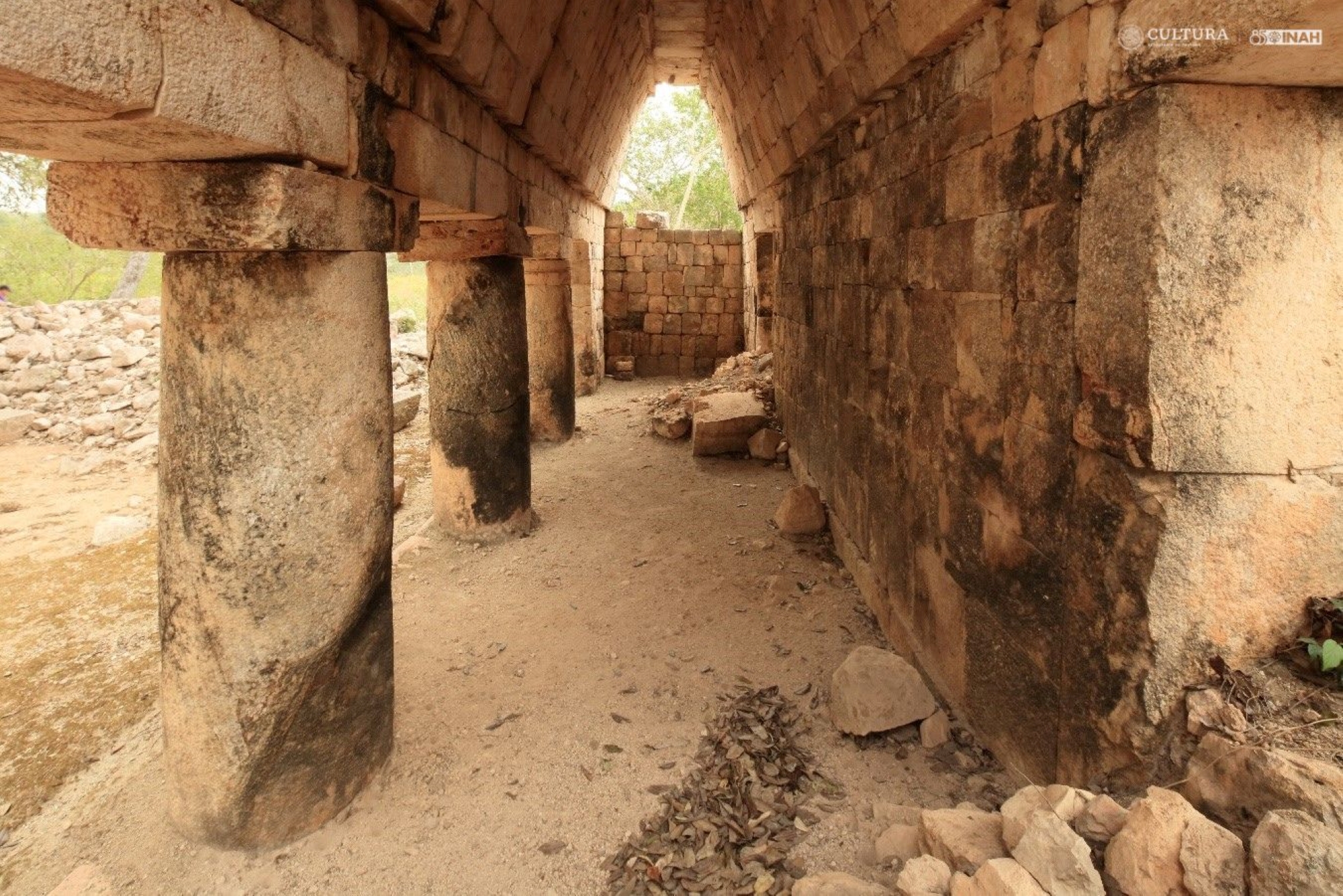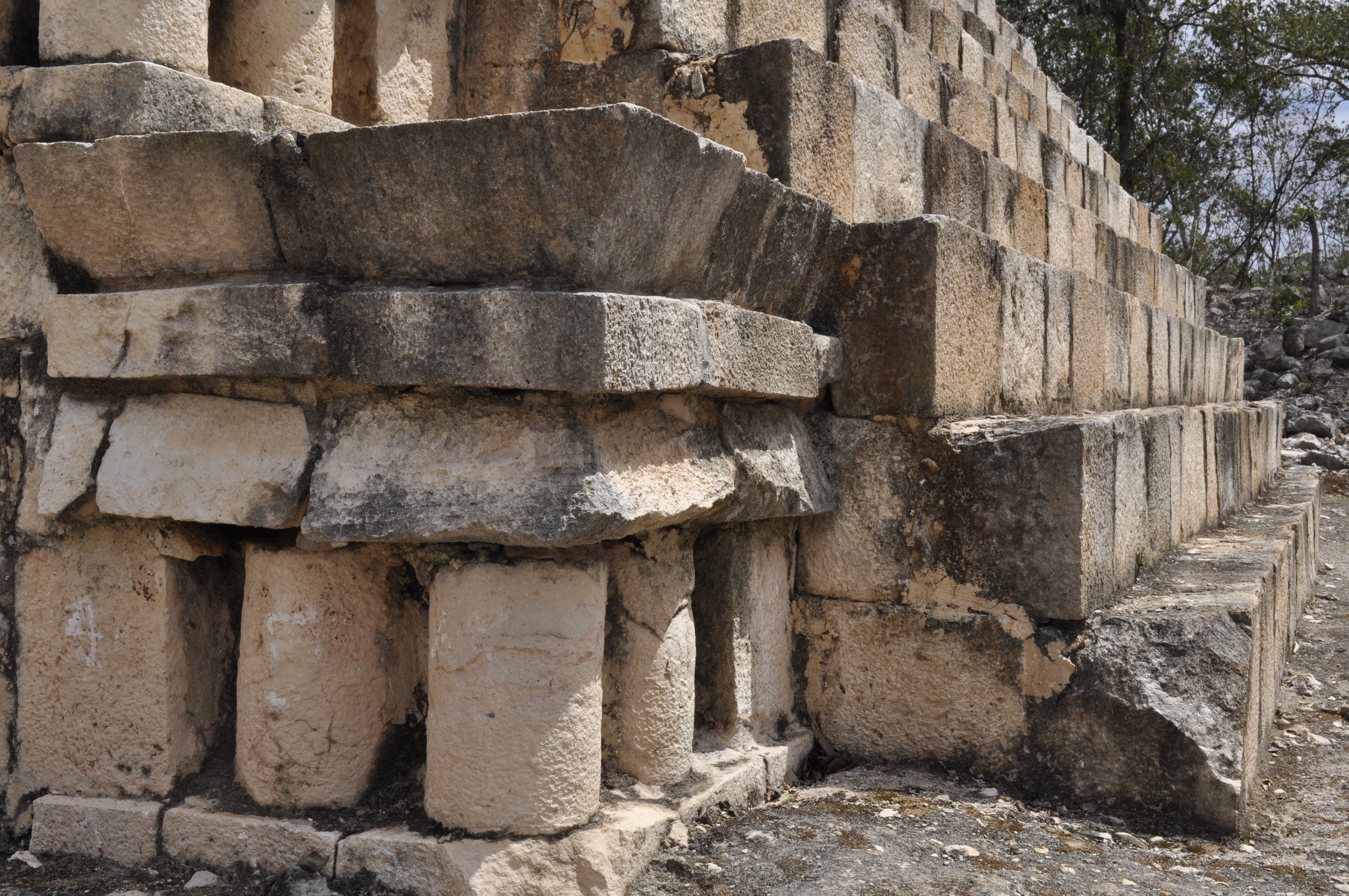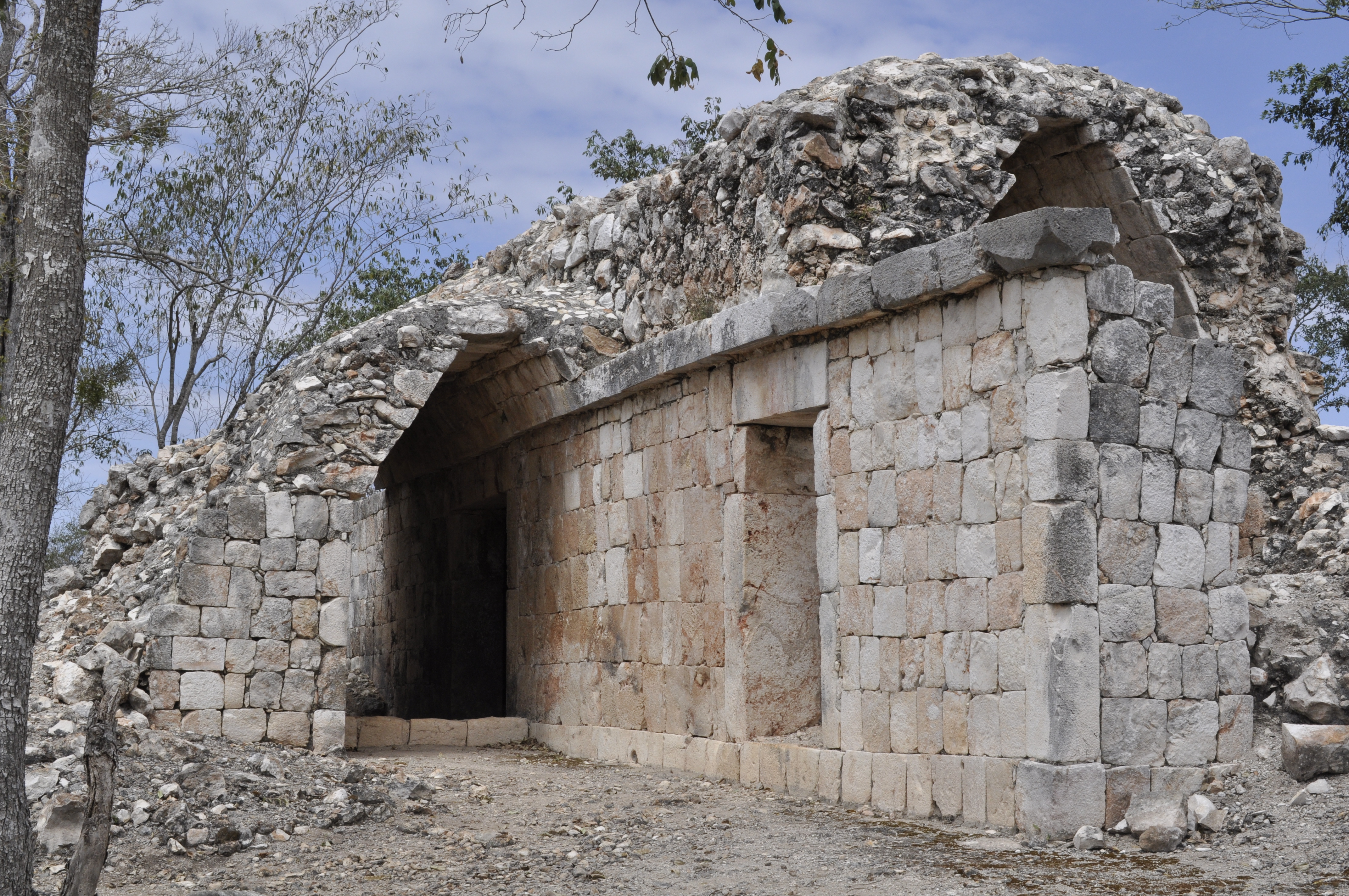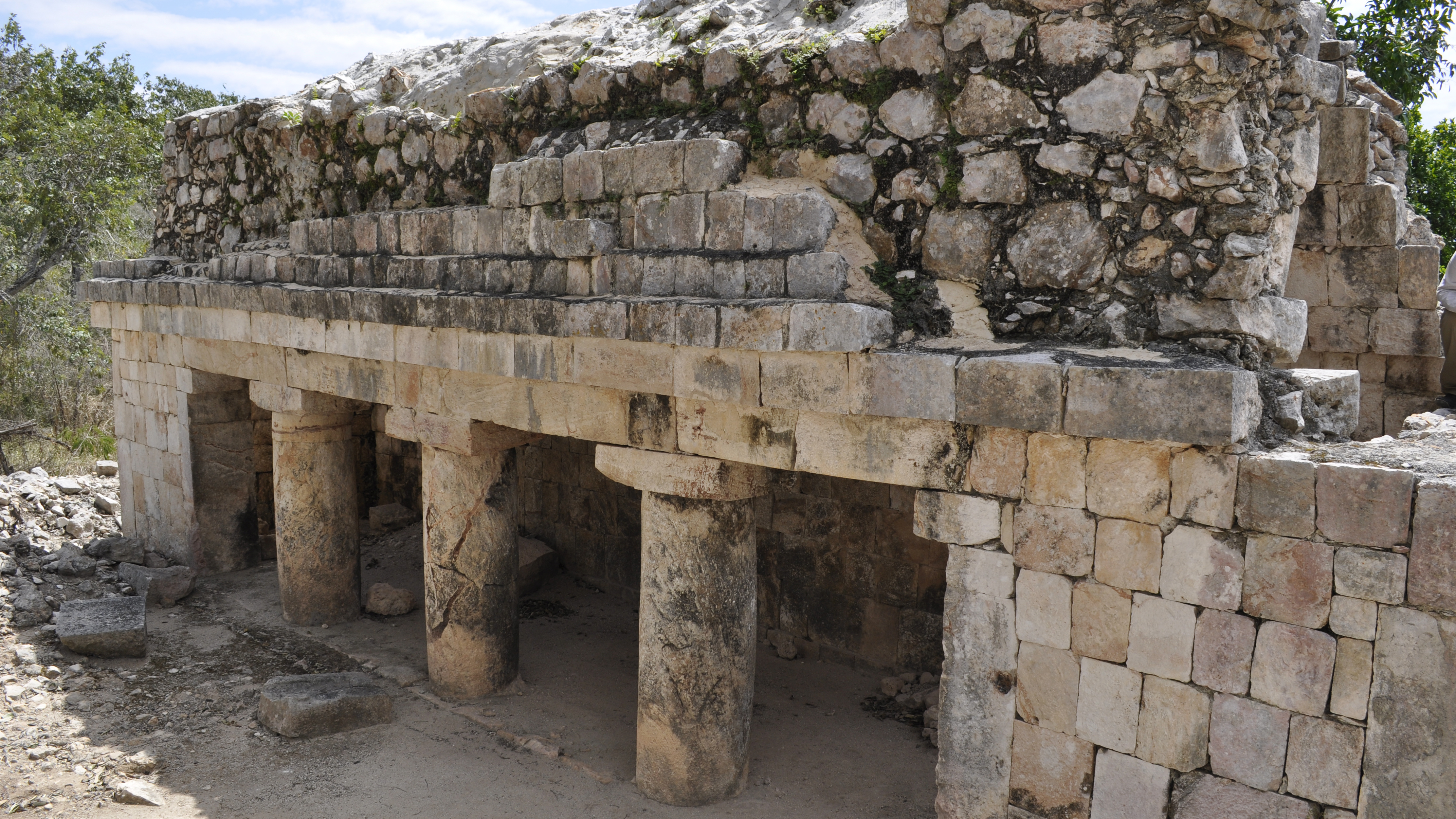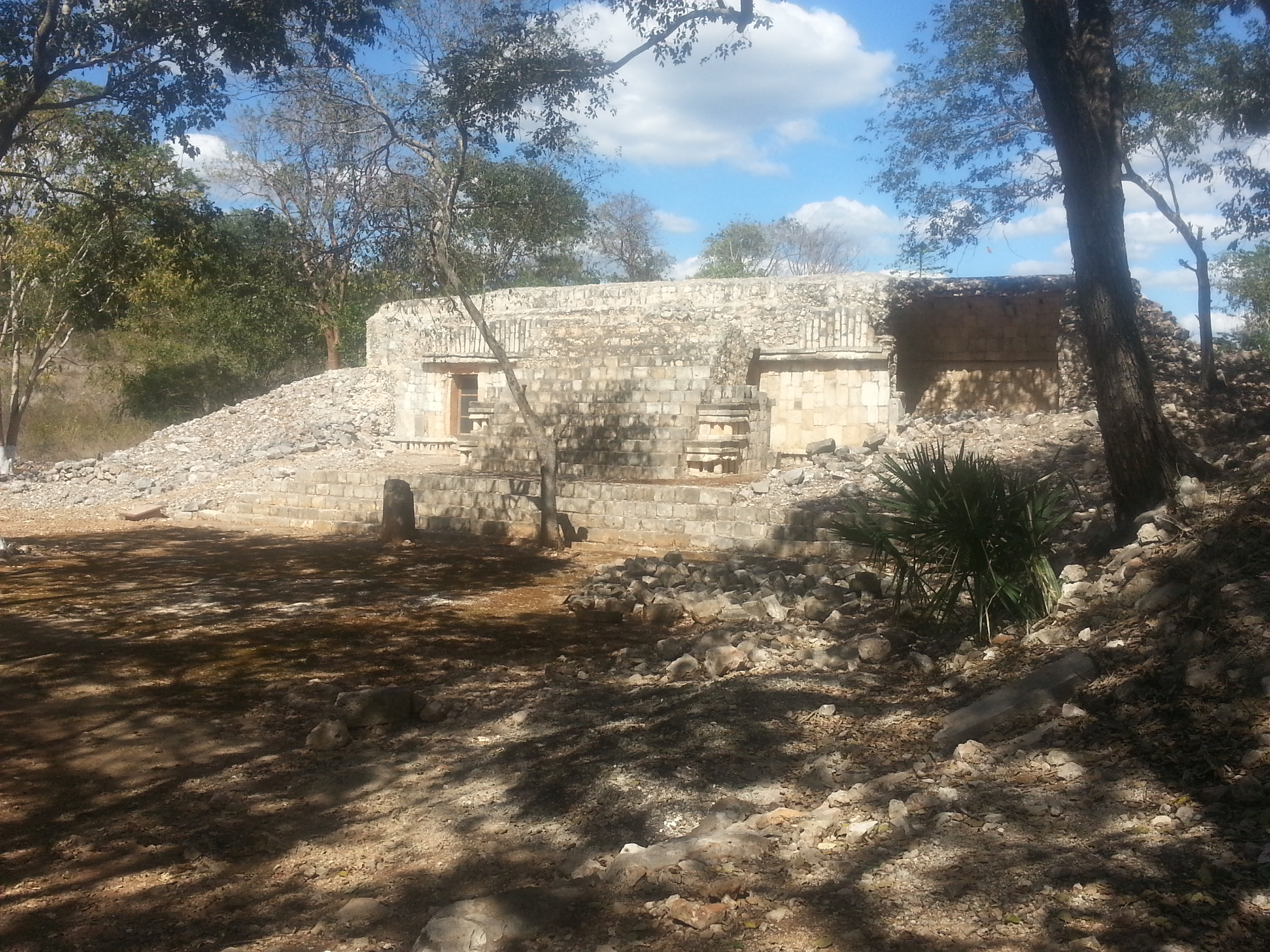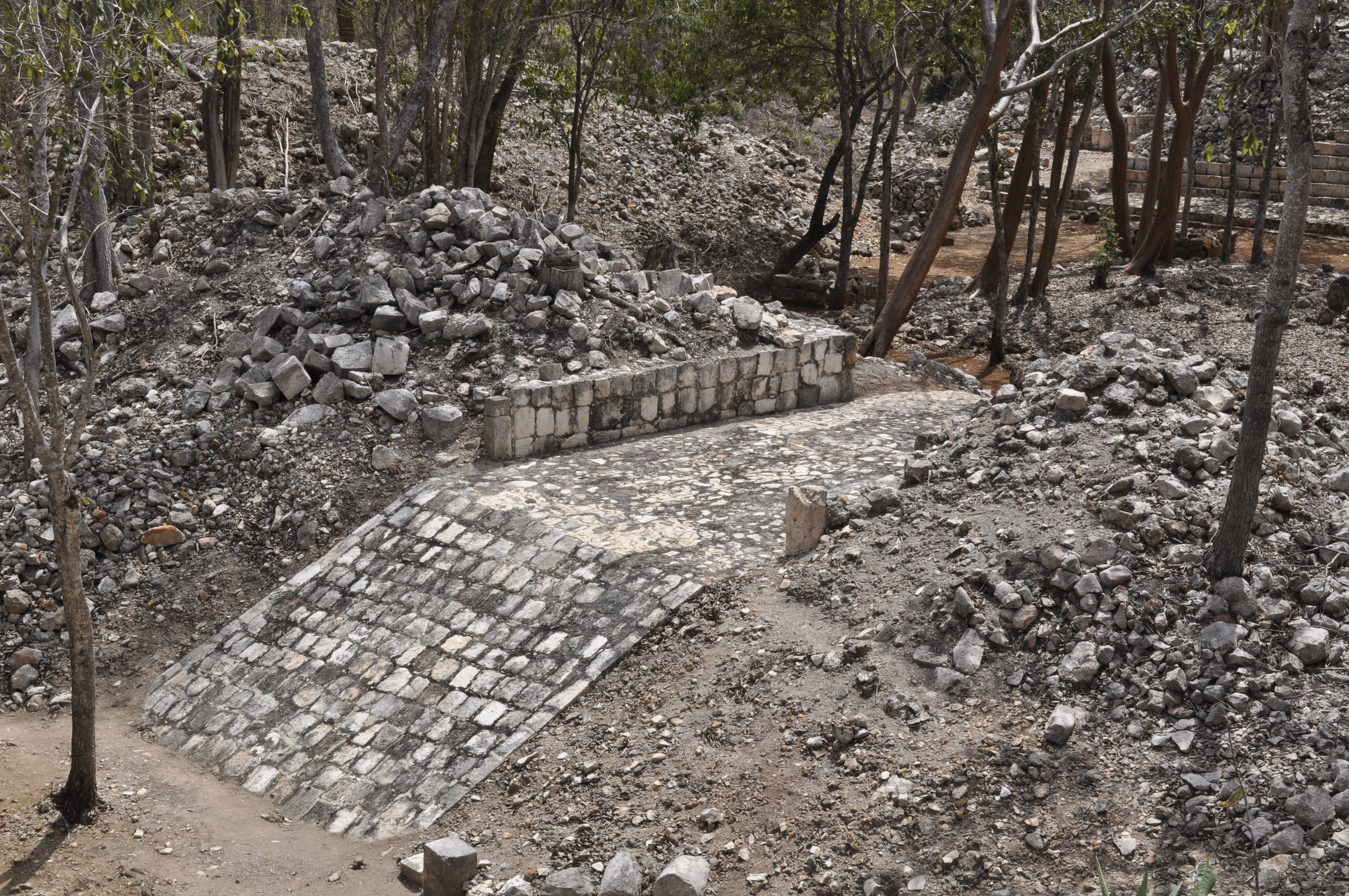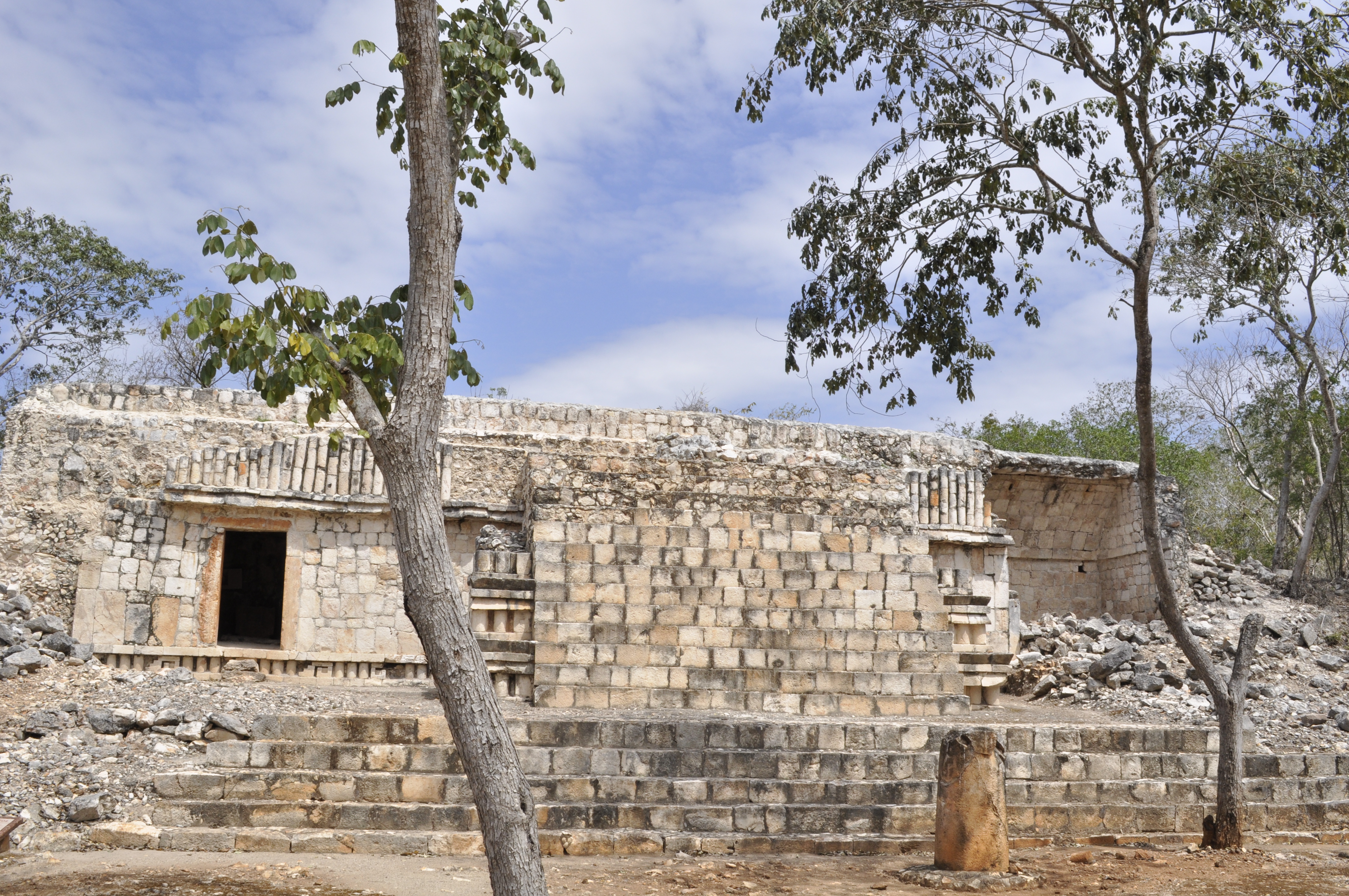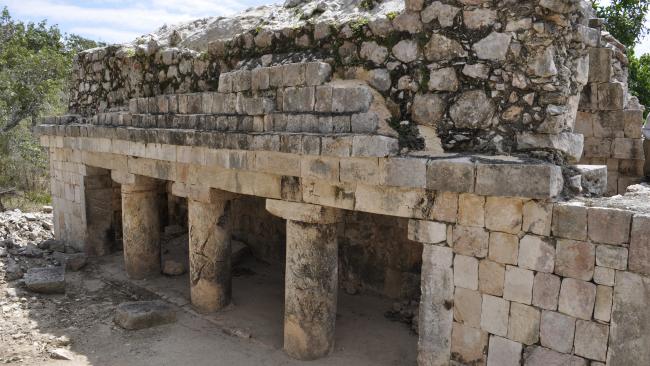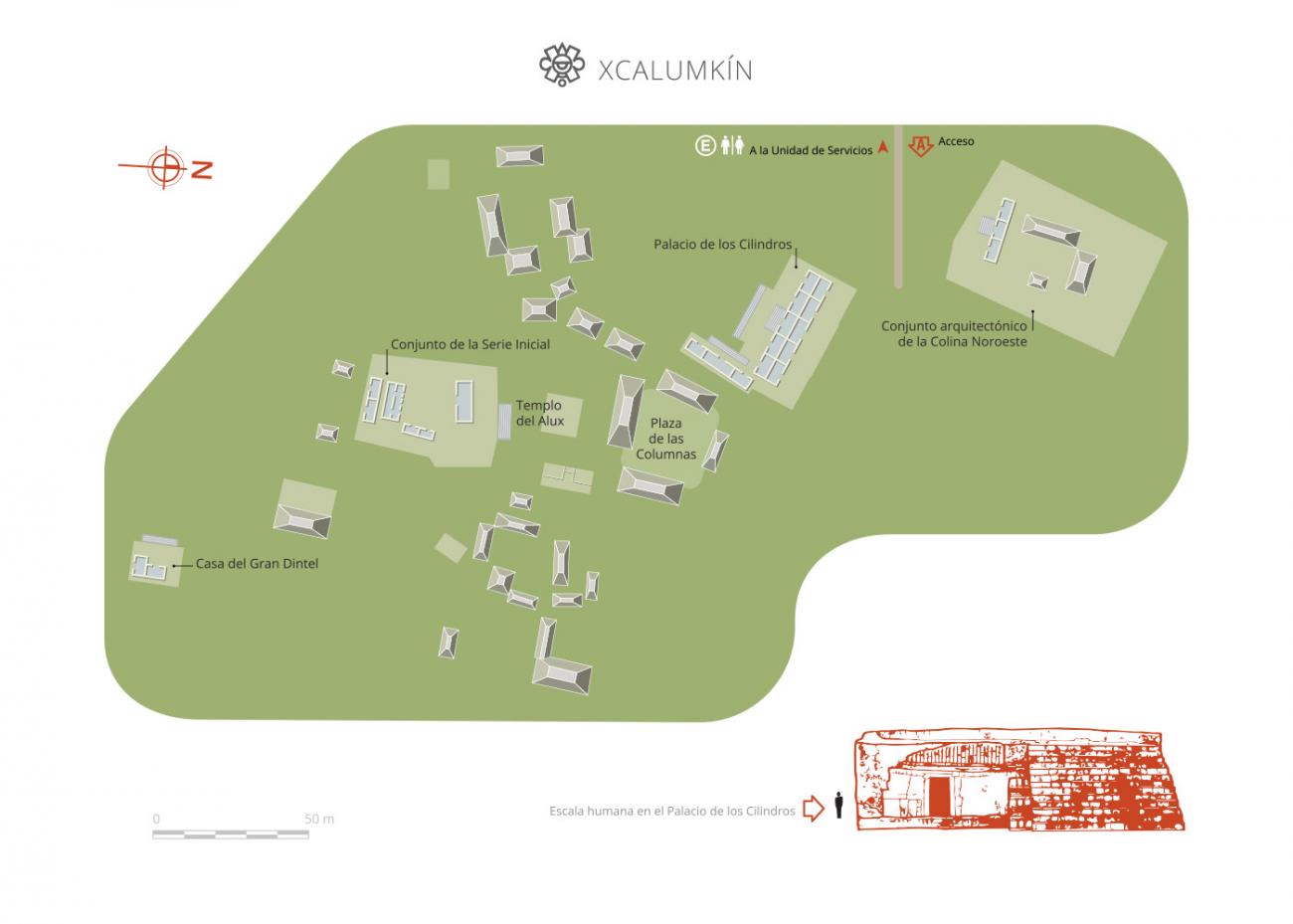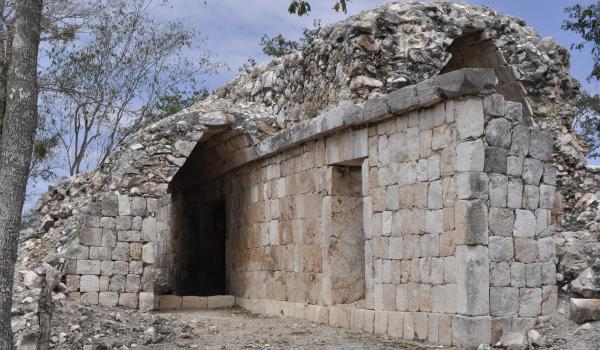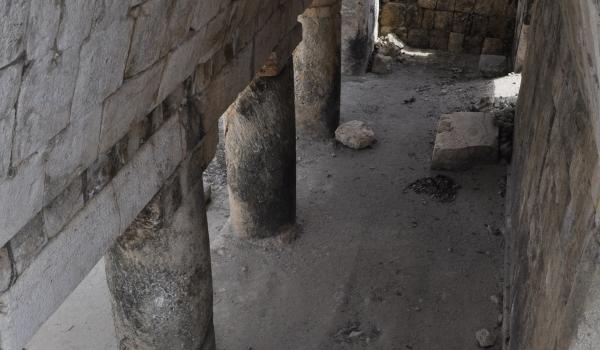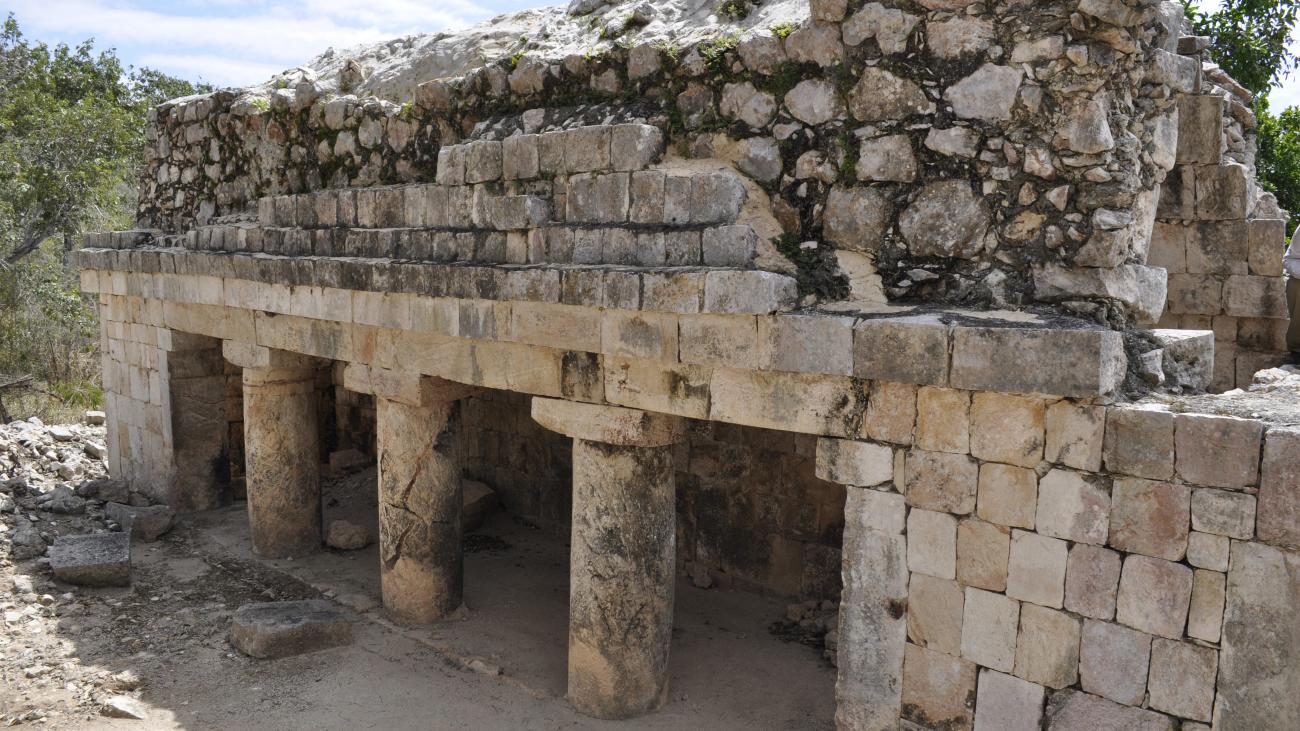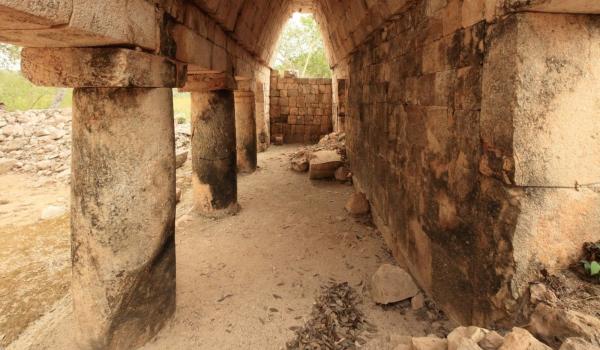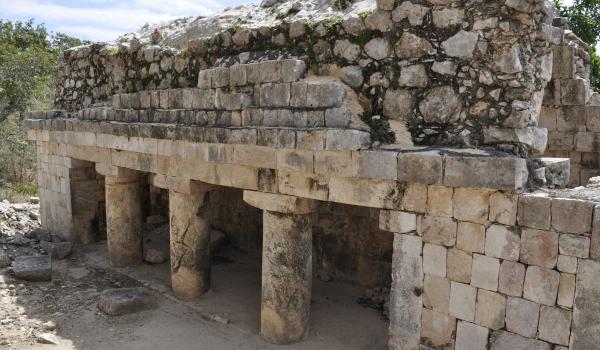This zone is considered to be of great importance due to its monumental architecture and profusion of interconnected hieroglyphic inscriptions. The remains of this pre-Hispanic settlement cover an area of almost four square miles. The ancient coastal city of Jaina is 31 miles from the archeological site of Xcalumkin, hence Jaina’s emblematic glyphs recorded in some of the texts found on the site; this is due to the fact that the ancient inhabitants of Xcalumkin remained in close contact with the coastal city, especially during the eighth century.
The earliest date found refers to 728 AD, and the latest 761 AD, confirming less than 40 years of written history; in other words, only two generations. Nevertheless, the inscriptions refer to more personages than could realistically have lived during such a short period because evidence reveals 14 names of different individuals, unlike in the glyphs found in the Petén, where the name of the sovereign K’ul Ahau (sacred lord) is frequently repeated. However, in Xcalumkin the distribution of names is almost equal, without any standing out as a supreme authority. However, sahal is the most frequently used honorific in Xcalumkin, and in other local sites, and refers to lesser dignitaries or lords subordinate to an Ahau or regional governor. Other titles deciphered in Xcalumkin include: its’at (wise man), mats (educated man), ah ts’ib (scribe) and ah kin (priest).





